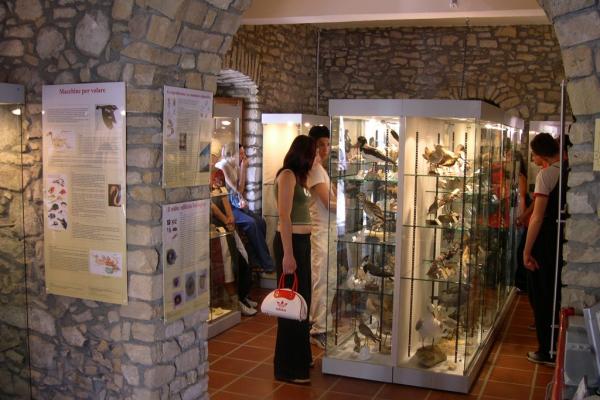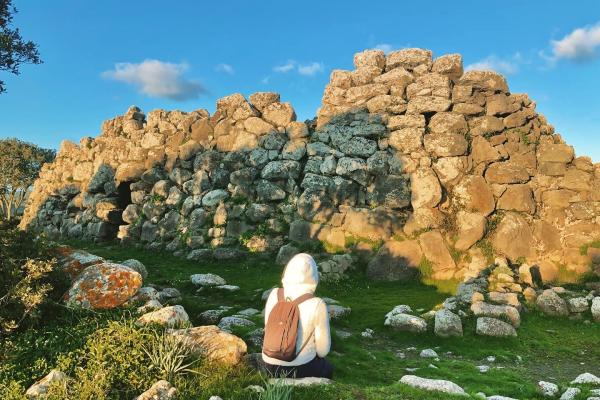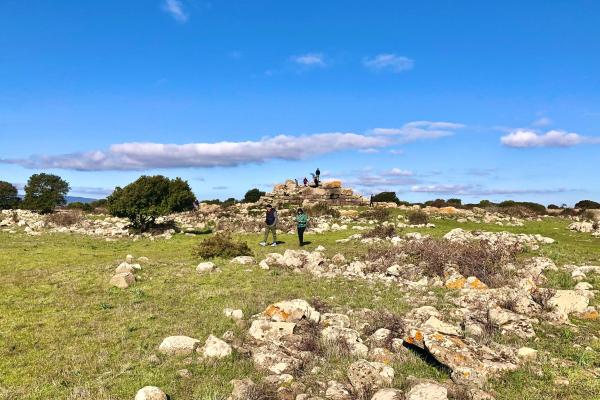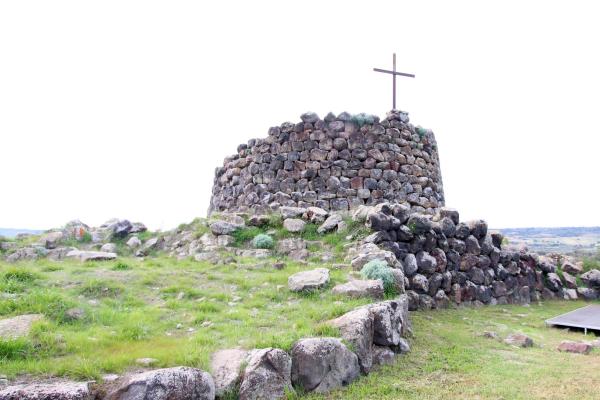It is one of the smallest Romanesque churches in Sardinia, but its main feature, which is clearly visible on the façade, is an architrave with images, carved in relief, of five anthropomorphic figures, one of which is upside down. This work, unique in Sardinian medieval sculpture, can be boasted only by the Church of San Michele Arcangelo. The sanctuary was built in the mid-13th century on a small hill that currently represents the outskirts of Siddi, built from brown and yellow marl, sandstone and basalt. The layout has two naves, but quite strangely, only one of the two - the one to the south, which is wider than the other - ends with an apse. The roof is made of wood, with a gabled roof in the main nave and a single-pitch roof in the ‘smaller nave-aisle’.
On the façade, you will notice only one hanging arch. Originally, there was probably a series of arches that ran along the entire façade, but they were lost following renovation work. The two portals both have architraves, with a rounded relieving arch. You will be impressed by the architrave on the left, where the sculpted figures appear within four panels, divided by vertical bands decorated with intertwined diamond shapes. The characters have broad shoulders and slender limbs: their symbolic interpretation still remains a mystery today. The inverted figure is the first on the left: according to the most widely-accepted theory, it represents the fall of Lucifer. Saint Michael, after whom the church is named, and God the Father appear in the second and third squares. The fourth panel presents two figures side by side, which may represent Adam and Eve. Others, however, think that the upside-down figure refers to allegories of death, already present in prehistoric monuments and in the Punic era, while the two characters nearby are ritual dancers. Once through the entrance, you will see that the naves are divided by three arches resting on octagonal pillars. The presbytery is slightly raised from the floor and contains a stone altar and two niches, where two wooden statues of Saint Michael reside. Behind it, the semicircular apse opens with a single-lancet window in the centre. There is also a third portal, on the south side, preceded - like the other two - by steps and above which there is a rounded arch.
Every year, on 29 September, the church is the scene of the celebration of the saint to whom it is dedicated. On the eve of the celebration, a statue of the saint arrives from the Parish Church of the Visitazione di Maria Vergine and is accommodated inside the church. On the day of the celebration, a solemn procession takes place along the town streets and lastly, the day after, the statue returns to the parish church of Siddi, a village that stretches into the valley of the ‘giara’ of the same name, in an area dotted with prehistoric evidence: the Tomb of Giants of sa Domu ‘e s’Orku stands out, imposing, well-preserved and made of basalt blocks. The corridor nuraghe of sa Fogaia, in the park of the same name, is also worth visiting. In the village, you can then visit the unmissable Museum of Agri-food Traditions and the Ornithological Museum of Sardinia, the only one of its kind on the Island.













